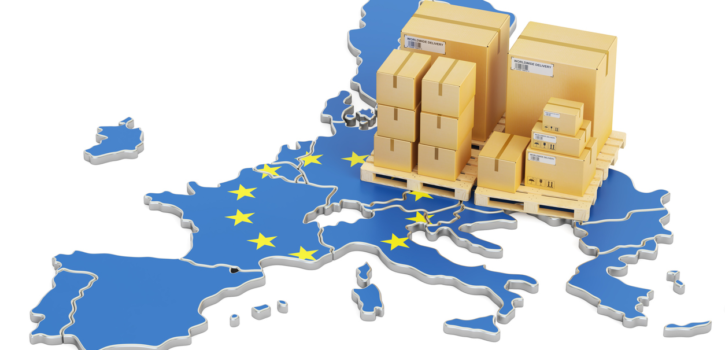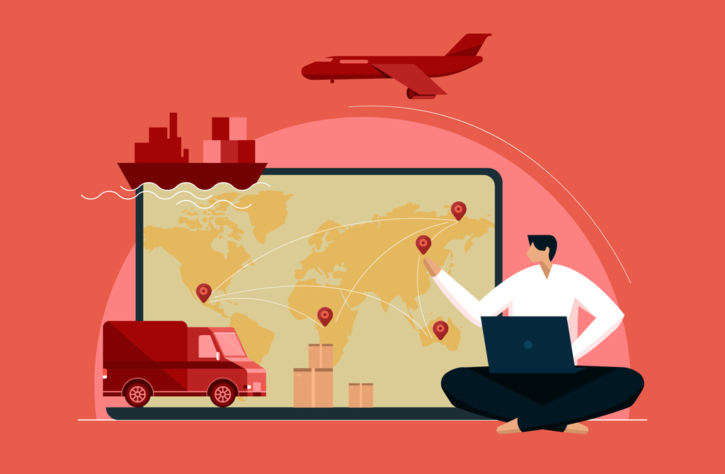How to develop your e-commerce business in Europe
Europe is a huge hub for global e-commerce, alongside China and the US. In 2023, e-commerce in Europe saw an increase of 9% and in January 2024, an increase of 8% was recorded, compared to 2023. This trend is evidence of the power of e-commerce in the EU zone.
This begs the question: how can you develop your e-commerce business in Europe and conquer the continent?
1. Identifying European countries in which to do business
The European e-commerce market is doing well. But your product or service might be more successful in some countries than in others!
For example, if you are marketing vegan cheese, this product will have more chance of selling in cities that are more vegan-focused, such as London, Berlin, Gand, Paris and Amsterdam.
To determine the European markets in which you should position yourself, you need to understand the expectations of consumers in different European countries.
You can also consult studies on e-commerce in Europe to find out about the number of online buyers in Europe by country.
The most important thing is to carry out market research in each country where you want to develop your business. This will tell you whether there is real potential for growth on a local scale or not.
2. Adapting to local customs
Once you have defined the country or countries in which to develop your business, you will need to study local customs and spending habits:
- Do consumers in that country need your product?
- When do they buy this type of product?
- How often do they buy this type of product?
- Which sites do they visit to buy this type of product?
- What are their favourite payment methods?
- What are their preferred delivery solutions?
- Who are the most popular influencers locally in your sector?
By taking the time to research similar products sold abroad and major market trends, you will be able to make well-thought-out decisions regarding the products you will offer your future European clients.
3. Adopting a coherent marketing strategy
Third step: develop a marketing strategy that will resonate with your European clientele.
To do this, you will need to study the different communication channels in the countries in which you want to establish your business.
Which function the best? Social media? TV advertising? Magazines? SEO? SEA? Word of mouth?
Don’t hesitate to analyse in detail the Internet usage habits of the target countries. For example, according to the Modérateur blog, German consumers tend to favour Xing over LinkedIn (rival professional networks).
So, it could be beneficial for you to create a business account on this channel to get yourself known in Germany? 🇩🇪
To establish a successful marketing strategy, you will need to:
- carry out a strategic analysis of the competition
- determine your objectives
- define your target clientele (in order to personalise your customer experience)
- choose your positioning
- implement your marketing strategy
- monitor and analyse the results of your marketing strategy.
Your value proposition will need to be well thought-out and relevant to the country your brand is targeting.
4. Translate your e-commerce site
If you want to develop your e-commerce business in Europe, it’s pointless to translate your website into Chinese or Japanese. You will need to choose which languages to translate your website into depending on your objectives. For example, if you want to sell your straw hats in Spain, Italy and Portugal, you should translate your website into Spanish, Italian and Portuguese.
TextMaster can help you translate your website pages consistently and professionally. We have even developed a translation API that lets you automate the management of your translation workflows. This functionality is very useful when you have large volumes of text to translate into several languages.
To take things a step further, here’s why you should translate your e-commece site now.
5. Ensure you’re legally compliant
Before developing your e-commerce business in Europe, make sure that you thoroughly research import laws, taxes and duties, which vary from country to country. This will enable you to determine where you can legally sell your products and how much that will cost you.
In addition, we recommend that you read up carefully on the EU rules governing e-commerce. These directives issued by the European Commission will enable you to exploit the full potential of European e-commerce while respecting the law.
You will also need to comply with GDPR (General Data Protection Regulation). These regulations govern the processing of users’ personal data within the European Union. You will need to respect them in your own country and in all the countries in which you establish your business. It is therefore indispensable to translate the clauses of the GDPR into different languages. Here, again, a professionnal TextMaster translator can help you.
6. Think about the logistic aspect (sending parcels in Europe)
Last but not least, you will need to consider the issue of parcel shipping.
You’ll need to find a trusted service provider to help you deliver your parcels throughout Europe. GLS, DHL and DPD are some of the most well-known delivery firms in Europe.
They will be able to handle your parcels from collection in your country to delivery in the European countries of your choice. This will enable you to avoid a whole host of problems, such as late deliveries, high shopping basket abandonment rates, unhappy customers, etc.
To choose your delivery company, we advise that you analyse:
- the price of the services offered
- the maximum weight of parcels shipped
- average delivery times
- whether it is possible to send parcels via an Express service
- how the company operates
- The popularity of the company locally, etc.
Developing your e-commerce business in Europe: summary
As you’ll have understood, developing your e-commerce business in Europe is not something to be left to chance.
Here, in summary, are the steps to follow to launch your business in Europe:
- identify the countries in which to establish your business
- adapt to local customs
- adopt a coherent marketing strategy
- translate your e-commerce site
- ensure you’re legally compliant
- think about logistics (delivery of parcels).
Once you’ve worked these details out, your sales are likely to skyrocket.
And that’s what we want for you!
To stand out from the crowd in Europe, why not offer a virtual fitting room on your e-commerce site?






